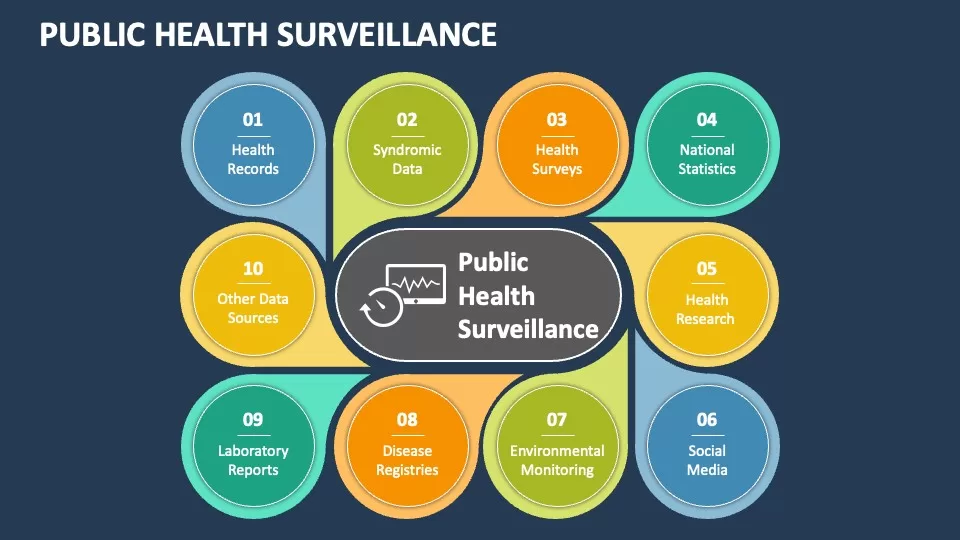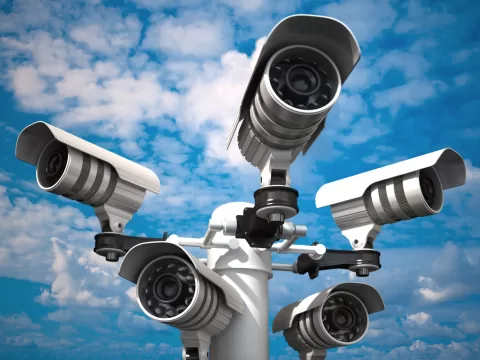Public health surveillance is an essential strategy in the fight against disease outbreaks, enabling health officials to detect emerging infectious diseases early and respond effectively. By monitoring various data sources, including social media chatter and wastewater surveillance, professionals can identify potential health threats before they escalate into larger crises. Timely detection through public health surveillance can save lives by facilitating rapid health crisis response, allowing for actions like contact tracing and preventive measures. As health systems worldwide continue to navigate the complexities of disease management, the importance of surveillance in maintaining public safety cannot be overstated. Through robust frameworks and innovative technologies, public health agencies strive to keep communities safe from the unexpected rise of diseases.
The concept of health monitoring encompasses various processes critical to controlling public well-being. By tracking health indicators and reporting unusual patterns, officials can swiftly identify incidents that may signify a health crisis. This proactive approach includes innovative methods such as monitoring community wastewater and engaging in thorough contact tracing efforts. Real-time data analysis and active event-based surveillance provide a comprehensive understanding of potential health threats. Ultimately, the overarching goal of these efforts is to ensure timely intervention and safeguard community health against potential outbreaks.
The Role of Public Health Surveillance in Disease Outbreak Detection
Public health surveillance serves as the backbone for early disease outbreak detection. This systematic approach involves collecting and analyzing health data from various sources — including hospitals, laboratory reports, and even social media — to identify unusual trends that may signal the emergence of infectious diseases. By constantly monitoring patterns, health officials can quickly respond to outbreaks before they escalate into larger health crises. Such surveillance activities not only help in identifying diseases early but also enhance preparedness for potential public health emergencies.
The incorporation of wastewater surveillance into public health practices further augments outbreak detection efforts. Pathogens excreted by individuals, even those who are asymptomatic, can be traced in sewage systems, providing critical insights into community health levels. This method proved effective during the COVID-19 pandemic, allowing health officials to track the spread of the virus long before symptoms appeared in the general population. By leveraging advanced technology and data analytics, public health surveillance continues to evolve, adapting to new challenges posed by emerging infectious diseases.
Event-Based Surveillance for Real-Time Health Crisis Response
Event-based surveillance is a proactive approach that continuously monitors for potential health crises as they unfold. This practice involves tracking various channels, such as news reports, social media platforms, and emergency room statistics, to detect any irregular patterns that could indicate an oncoming outbreak. Public health officials rely on a network of community reports and rumors, validating them through established channels to ensure rapid and informed responses. This multi-faceted strategy is pivotal in identifying threats at their inception, enabling swift intervention when needed.
An essential element of event-based surveillance is community engagement. Public health authorities encourage individuals, healthcare providers, and local leaders to report unusual health events, creating a collaborative network that enhances detection efforts. When local health departments receive these reports, they can quickly assess the situation and escalate responses as needed. This collaborative approach ensures that health crises are managed efficiently, significantly improving the chances of controlling outbreaks before they impact wider populations.
Innovations in Contact Tracing for Containment
Contact tracing has emerged as a vital tool in pandemic response, designed to identify and isolate individuals who may have been exposed to infectious diseases. In recent years, especially during the COVID-19 pandemic, this practice has evolved to include digital solutions, such as mobile apps that help streamline the process of tracing contacts. Utilizing technology allows public health officials to respond more efficiently, minimizing the time between exposure and notification of potentially affected individuals.
Despite its effectiveness, contact tracing requires public cooperation to be successful. Individuals must be open to sharing their experiences and adhering to isolation or testing recommendations. This cooperation fosters trust between the public and health officials and supports the overall goal of outbreak containment. When implemented effectively, contact tracing not only aids in stopping the spread of diseases but also instills greater community resilience against future public health threats.
Understanding Wastewater Surveillance’s Impact on Public Health
Wastewater surveillance has emerged as a groundbreaking method for monitoring community health by analyzing sewage for pathogens. This approach allows health officials to detect the presence of infectious diseases, including those transmitted by asymptomatic individuals who may not seek medical attention. By establishing proactive wastewater monitoring systems, public health agencies can gain insights into the prevalence of diseases like COVID-19 before they manifest in clinical settings, thereby enhancing response capabilities and resource allocation.
Additionally, wastewater surveillance contributes to a more comprehensive understanding of community spread patterns. By assessing the levels of specific pathogens detected in sewage, health officials can identify hotspots for potential disease outbreaks and implement targeted intervention strategies. This innovative surveillance method is becoming a cornerstone of public health strategies, particularly in light of the increasing frequency of emerging infectious diseases, providing a vital tool for efficient planning and crisis management.
Predictive Modeling in Public Health Response
Predictive modeling plays a critical role in public health surveillance, allowing health officials to anticipate the spread of infectious diseases and effectively allocate resources. By analyzing historical data coupled with real-time information, predictive models can forecast potential outbreak scenarios, helping to inform decision-making processes regarding containment measures and healthcare readiness. This proactive approach ensures that health systems can respond swiftly and adequately to emerging threats, ultimately reducing the potential impact on the population.
Moreover, predictive modeling can enhance communication among public health agencies, hospitals, and community organizations. By sharing insights derived from predictive analytics, stakeholders can collaborate more effectively, ensuring a coordinated response to outbreaks. This collaborative network improves operational efficiency, provides timely updates to healthcare workers, and equips communities with vital information, all essential elements for disaster preparedness in the face of public health emergencies.
The Importance of Emergency Room Data in Disease Surveillance
Emergency room data plays a significant role in public health surveillance by providing critical information about emerging health threats. Hospitals are often the first line of defense against infectious disease outbreaks, and the information they collect can reveal unexplained increases in illness or specific symptoms that warrant immediate attention. Local health departments rely on these data streams to monitor trends, helping to identify potential outbreaks in their early stages.
Incorporating emergency room statistics into overall public health surveillance systems allows for a comprehensive understanding of community health dynamics. By analyzing patterns of patient visits related to respiratory distress or infectious diseases, health authorities can assess whether there is a wider public health concern that needs addressing. This synergy between emergency care data and public health practices exemplifies the essential integration required for effective disease outbreak management.
Health Crisis Preparedness through Surveillance Techniques
Public health surveillance techniques are integral to health crisis preparedness, empowering health systems to respond to emerging infectious diseases effectively. By establishing robust surveillance frameworks that include both indicator-based and event-based techniques, health officials can maintain situational awareness and ensure that resources are allocated effectively during health emergencies. This preparedness minimizes the impact of crises on populations and healthcare systems.
Moreover, building a culture of preparedness among public health professionals enhances community resilience. Training and equipping staff with the skills needed to implement surveillance techniques fosters a proactive approach to health crises, where officials can act swiftly. These mechanisms, when continuously reviewed and adapted to incorporate new challenges and technologies, will ensure that health systems remain vigilant and prepared to face any future health threats.
The Future of Public Health Surveillance in Emerging Infectious Diseases
The landscape of public health surveillance is constantly evolving, especially in the face of emerging infectious diseases. The integration of innovative technologies such as artificial intelligence, machine learning, and big data analytics is transforming traditional surveillance methods into dynamic systems capable of addressing complex public health challenges. By enhancing data collection and analysis, these advancements facilitate quicker identification of potential outbreaks and enable health officials to devise targeted responses.
As public health surveillance continues to evolve, collaboration across disciplines will be crucial. Partnerships among government agencies, private sector companies, and academic institutions will foster research and innovation, leading to the development of comprehensive surveillance strategies. By preparing for emerging infectious diseases through these collaborative efforts, public health officials will be better equipped to mitigate risks and protect population health effectively.
Community Involvement in Public Health Surveillance
Community involvement plays a pivotal role in the success of public health surveillance initiatives. Engaging local populations in reporting health concerns and unusual events creates a culture of vigilance that can enhance detection efforts. When communities actively participate in public health surveillance, they become essential partners in the broader mission to prevent disease outbreaks, ensuring that local health authorities have access to timely information about potential threats.
Encouraging community engagement can take many forms, including educational campaigns about the importance of reporting unusual health patterns or symptoms. Public health departments can also establish user-friendly reporting mechanisms that enable citizens to easily communicate potential health issues, thereby improving the accuracy of the surveillance data they collect. By building trust and collaboration with communities, public health surveillance can become more effective, ultimately leading to better health outcomes.
Frequently Asked Questions
What is public health surveillance and why is it important?
Public health surveillance is a systematic method of collecting and analyzing health data to detect and respond to potential health threats. It is crucial for identifying disease outbreak detection, managing health crises, and implementing effective public health responses. By monitoring trends in health data, officials can act early to prevent outbreaks from escalating.
How does wastewater surveillance contribute to public health surveillance?
Wastewater surveillance is a vital tool in public health surveillance as it detects pathogens shed by individuals in sewage. This method allows health officials to monitor community health and identify potential outbreaks of diseases like COVID-19 and influenza, even among asymptomatic individuals. By analyzing sewage samples, public health experts can respond proactively to emerging health threats.
What role does contact tracing play in public health surveillance?
Contact tracing is a key component of public health surveillance during disease outbreaks. It involves identifying and notifying individuals who have been in close contact with an infected person. This helps health officials to contain the spread of disease by advising on testing, monitoring for symptoms, or enforcing isolation measures. Effective contact tracing played a significant role during the COVID-19 pandemic in curbing transmission.
What methods are used in disease outbreak detection within public health surveillance?
Disease outbreak detection involves a combination of indicator-based and event-based surveillance methods. Indicator-based surveillance systematically collects health data from hospitals to identify trends and anomalies, while event-based surveillance monitors real-time reports from various sources, such as social media and emergency departments, to detect unusual patterns of illness that may indicate an outbreak.
How do health officials respond to emerging infectious diseases through public health surveillance?
Health officials respond to emerging infectious diseases by utilizing public health surveillance systems to gather data about new health threats. Once a potential outbreak is detected, teams mobilize to collect samples for analysis, conduct contact tracing, and implement containment strategies. This organized response aims to limit the spread and impact of the disease before it escalates into a larger health crisis.
Why is it essential to monitor social media as part of public health surveillance?
Monitoring social media is essential in public health surveillance as it provides real-time insights into public health concerns, such as unusual illness reports or crises. By tracking social media discussions, health officials can identify potential health threats quickly and coordinate timely responses, enhancing disease outbreak detection and public health preparedness.
What are the benefits of using predictive models in public health surveillance?
Predictive models in public health surveillance help health officials anticipate the spread of diseases, allowing for better resource allocation and strategic planning. These models analyze data trends to predict outbreak patterns, enabling proactive measures and timely responses to contain health crises. This foresight can significantly reduce the impact of emerging infectious diseases.
How does public health surveillance help manage health crisis responses?
Public health surveillance manages health crisis responses by providing continuous data analysis on disease trends, helping officials track outbreaks, and informing decision-making. This systematic approach ensures effective communication, timely resource deployment, and coordinated actions that are essential for limiting the spread of diseases and protecting public health.
| Aspect | Description |
|---|---|
| Public Health Surveillance | Systematic monitoring of health data to identify and respond to disease outbreaks. |
| Types of Surveillance | 1. Indicator-based Surveillance: Routine collection of health data. 2. Event-based Surveillance: Real-time monitoring for unusual health events. |
| Data Sources | Hospitals, sewage systems, social media, emergency departments, local reports. |
| Contact Tracing | Identifying and notifying individuals who have been in contact with infected persons to prevent the spread of disease. |
| Containment Strategies | Isolation, quarantine, travel restrictions, and monitoring practices to control outbreaks before they escalate into pandemics. |
| Public Cooperation | Public adherence to health guidelines is vital for effective disease control efforts. |
Summary
Public health surveillance plays a crucial role in identifying and managing disease outbreaks effectively. By utilizing various methods such as monitoring social media trends and wastewater analysis, health officials can detect potential health threats early and implement timely strategies to mitigate their impact. Continuous vigilance is essential for public health safety, ensuring that emerging diseases are swiftly addressed to maintain community health.
The content provided on this blog (e.g., symptom descriptions, health tips, or general advice) is for informational purposes only and is not a substitute for professional medical advice, diagnosis, or treatment. Always seek the guidance of your physician or other qualified healthcare provider with any questions you may have regarding a medical condition. Never disregard professional medical advice or delay seeking it because of something you have read on this website. If you believe you may have a medical emergency, call your doctor or emergency services immediately. Reliance on any information provided by this blog is solely at your own risk.







